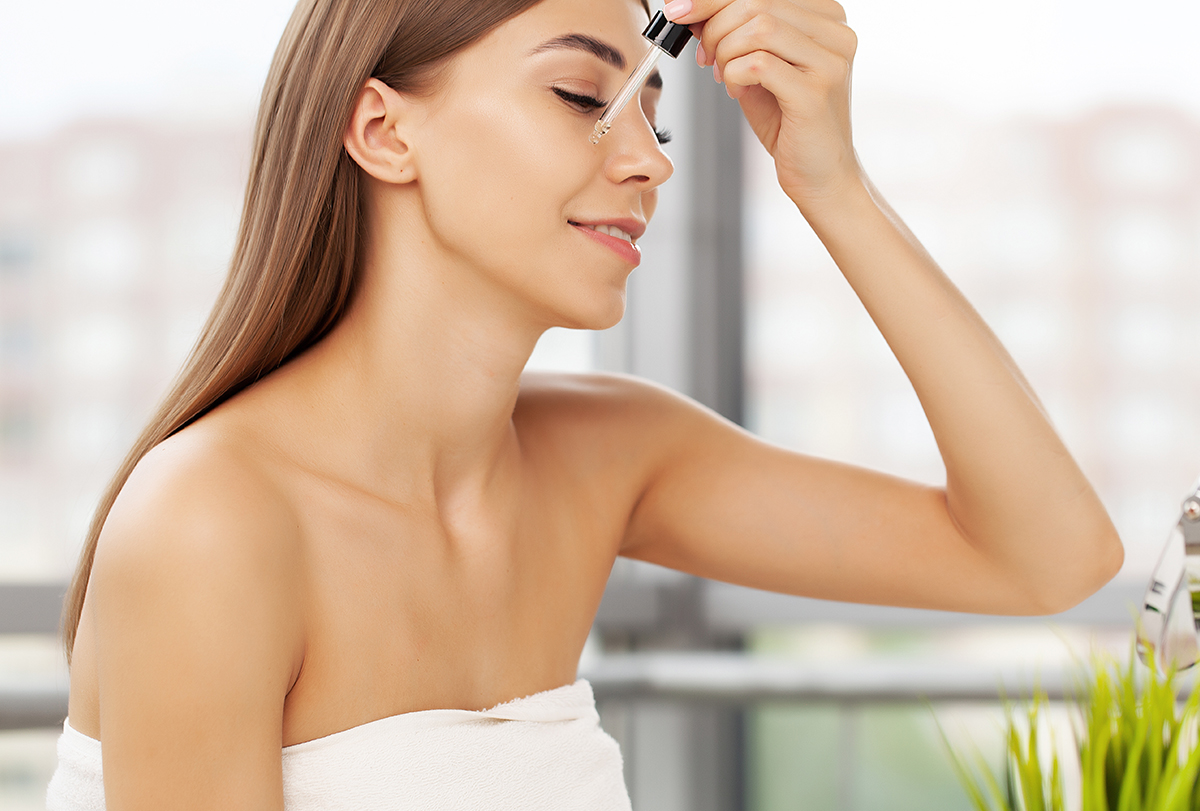In this article:
Mandelic acid has gained popularity in the skin care industry, primarily because of its exfoliating properties. So, yes, mandelic acid does exfoliate, making it helpful in improving various skin concerns such as acne. (1)

If you’re wondering whether mandelic acid is an effective exfoliant, this article will deliver the facts. Read on to learn when to use mandelic acid to exfoliate.
Exfoliating Action of Mandelic Acid
When it comes to exfoliation, mandelic acid takes the spotlight as an exceptional aromatic α-hydroxy acid (AHA), because of which it is widely recognized for its ability to treat mild-to-moderate acne.
Exfoliation is the process of removing deceased skin cells from the exterior of the skin. Research says that mandelic acid works by reducing the force between the corneocytes, the outermost layer of the skin, resulting in gentle yet effective exfoliation. (1)(2)
In a study conducted on 12 volunteers with acne, the application of a gel containing 5% mandelic acid, along with other acids, resulted in a visible reduction of acne and acne scars as the product effectively exfoliated the skin and improved the overall complexion without any side effects after 6 weeks of use. (3)
Why Is Mandelic Acid a Better Exfoliant Than Other Exfoliants?
What sets mandelic acid apart from other exfoliating agents is its unique molecular structure, which allows for slower skin penetration and minimizes the risk of irritation that is associated with other exfoliants such as glycolic acid. (3)
Additionally, mandelic acid boasts antibacterial properties, making it a well-tolerated option for skin care compared to other exfoliating agents. (1)(2)
What Actually Is Mandelic Acid?
Mandelic acid is a natural compound found in bitter almonds. It belongs to a group of acids called AHAs. It has been found to have various benefits for the skin, including improving signs of aging, reducing pigmentation problems, and treating acne.
Due to its large size and unique properties, mandelic acid can effectively exfoliate the skin, making it smooth and even toned. It also has antibacterial and anti-inflammatory actions, which can help combat acne and inflammation on the skin. (4)(5)
Beneficial Effects of Mandelic Acid on the Skin

Here are some beneficial effects of using mandelic acid on the skin because of its various properties including antibacterial, anti-inflammatory, and exfoliating actions.
1. Treats acne
Mandelic acid is efficacious in treating acne because of its exfoliating and anti-inflammatory actions.
In a study, 45% mandelic acid peel and 30% salicylic acid peel both improved mild-to-moderate acne, with mandelic acid showing fewer side effects. (4)
2. Manages inflammation/skin redness
Mandelic acid has shown effectiveness in treating superficial redness with minimal side effects and a short recovery time. (6)
3. Combats skin aging
Research has demonstrated that the administration of products containing 2% mandelic acid, such as creams and cleansers, can reduce oiliness and greasiness in aged or mature skin.
It can also reduce fine lines and wrinkles, resulting in a more youthful build of the skin after 8 weeks of use. (7)
How to Use Mandelic Acid for Skin Exfoliation?
To use mandelic acid for skin exfoliation:
- Wash your skin with a mild cleanser.
- Apply a small amount of mandelic acid to the desired areas.
- Let it stay on for the required time (5-10 minutes)
- Rinse it off thoroughly with water.
- Moisturize your skin to retain its hydration.
Note: Remember to begin with a lower concentration and slowly raise the concentration to what can be tolerated by your skin.
Adverse Effects and Precautions When Using Mandelic Acid

According to research and studies, mandelic acid is very safe to use and does not have a lot of side effects. When it comes to using mandelic acid for exfoliation, it is much better than other exfoliants such as glycolic acid because it does not clog pores or irritate the skin. (1)(2)(3)
However, it is still best to follow some precautions if you are using mandelic acid:
- Before using mandelic acid on your skin or large areas of the body, it’s advisable to perform a test on a tiny region of the skin to check for any negative responses.
- If you’re new to using mandelic acid, begin with a very mild concentration and slowly increase the potency over time.
- After using mandelic acid, apply sunblock with a good SPF before going out.
Most-Asked Questions
What skin types can benefit from mandelic acid?
Mandelic acid is suitable for various skin types, including sensitive, acne-prone, and aging skin.
Is mandelic acid suitable for daily use?
Yes, mandelic acid can be used daily, but it’s advised to begin with a low-potency product.
Can mandelic acid help with acne?
Yes, mandelic acid has properties that can help reduce acne.
Can mandelic acid be applied to sensitive skin?
Yes, mandelic acid is often handled well by sensitive skin because of its huge molecular size.
Can I apply mandelic acid if I have rosacea?
It’s advised to talk with a specialist before using mandelic acid if you have rosacea or other skin issues.
Should I moisturize after using mandelic acid?
Yes, it’s important to moisturize after using mandelic acid.
Can mandelic acid be used on dark skin tones?
Yes, mandelic acid is applicable for use on various skin tones.
Final Word
Mandelic acid has emerged as a versatile exfoliating agent with numerous benefits for the skin. Its gentle yet effective exfoliation properties make it appropriate for different skin types, even sensitive and acne-prone skin.
- Was this article helpful?
- YES, THANKS!NOT REALLY


